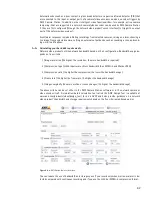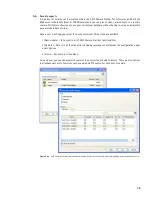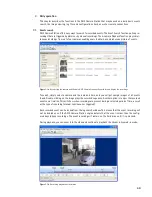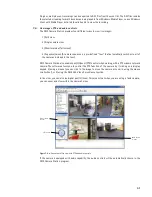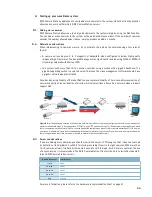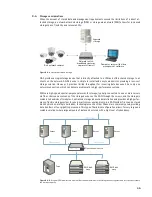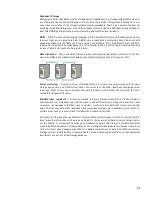
36
Figure 5.3.a.
Making recording settings using AXIS Camera Station.
For each camera, you can specify the image settings (streaming format, quality, frame rate and size) to
be used for recording. The settings will affect the amount of bandwidth used, as well as the amount of
storage space required.
For recordings triggered by video motion detection, AXIS Camera Station uses the Axis network camera/
encoder’s built-in motion detection functionality. This reduces bandwidth usage and processing load on
the server. (More about video motion detection is covered in Chapter 6.) With recordings triggered by
external inputs/outputs (I/O triggered recording), simply define the alarm trigger for the selected camera(s)
that will record when the alarm is triggered. The length of the pre- and post-alarm image buffers can be
set by defining the number of seconds the camera/encoder should record before and after an alarm is
triggered. The image buffers help to provide a more comprehensive picture of an event. Recording only
when motion or alarm is detected will save hard disk space compared with continuous recording.
The AXIS Camera Station’s background service automatically starts running upon system start-up. When
the background service is running, recording will continue even after a user has logged out from the PC
where AXIS Camera Station is installed.
Event handling
AXIS Camera Station has an event handler that is built into the recording engine. It allows you to con-
figure the actions to be taken when defined events are triggered. Triggers in AXIS Camera Station are
classified under two categories: video motion detection and input/output.
Video motion detection is triggered when an Axis camera/video encoder detects motion within its defined
viewing area. The detection is performed by the Axis camera/video encoder so there is no processing load
on the AXIS Camera Station server. (More about video motion detection is covered in Chapter 6.)
5.4.
Summary of Contents for IP-Surveillance system
Page 49: ...49 ...
















